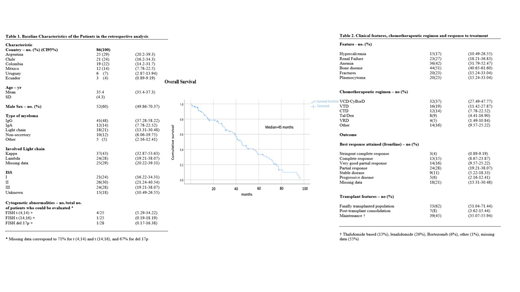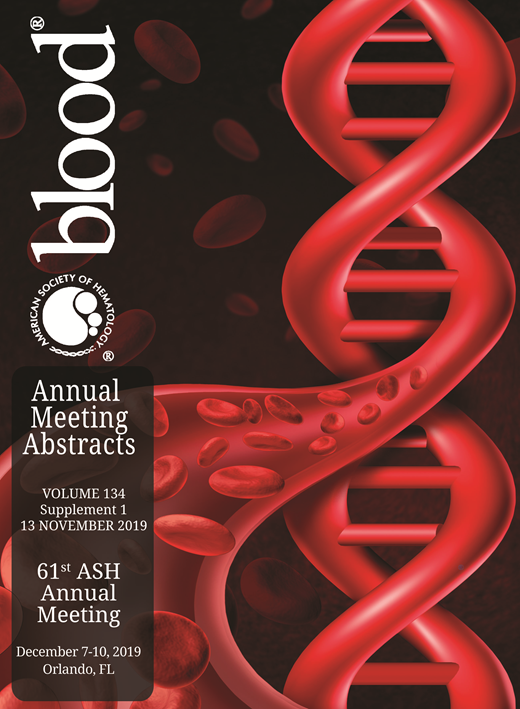Background Multiple myeloma (MM) is a heterogeneous disease that is most frequently diagnosed in the elderly. Therefore, data on clinical characteristics and outcomes in the young population are scarce and it is recognized that it remains incurable even in this group of patients. We present here the outcomes of patients under 40 years old cohort in Latin-American countries. On behalf of GELAMM (Grupo de Estudio Latino-Americano de Mieloma Múltiple).
Methods Retrospective international multicenter cohort study. We analyzed MM patients under 40 years old who received treatment in 6 Latin-American countries, between 2010 and 2018. Demographics and disease features were analyzed using descriptive statics. We examined treatment characteristics and response rates. The overall survival (OS) of the entire cohort was analyzed using Kaplan-Meier curves.
Results Eighty-six patients of 6 countries were analyzed (Table1). The mean age was 35.4 years old, and 60% were male. The most frequent monoclonal component type was IgG followed by light chain MM. Risk determined by ISS was distributed in almost equal percentages. The most frequent cytogenetic alteration was the t (4;14) that was found in four patients out of 25 evaluated. The missing data were greater than 70%. Skeleton-related events were the most frequent clinical feature, followed by anemia and renal failure. Plasmacytomas and fractures were present in more than 20 percent of cases.
With regard to treatment, VCD / CyBorD was the most used regimen, followed by VTD. The overall response rate (ORR) was 63%. Fifty-three patients received high dose therapy and autologous stem cell transplantation (62%). Only 8% received post-transplant consolidation, and 45% received maintenance therapy.
The median OS of the entire cohort was 45 months, and a plateau in the survival curve was not observed, suggesting that patients continue relapsing over the time.
Conclusion In this Latin American multicenter study, we found that the young population with MM has similar presentation characteristics to those of elderly patients. A significant amount of information is lost regarding the risk characterization, especially in regard with cytogenetics. With respect to treatment, less than half of the patients achieve very good partial response or better. It is striking that more than a third of this young patients did not access to high doses of chemotherapy and bone marrow transplantation. Maintenance therapy is offered to less than half patients. The median OS is lower than in other series of patients younger than 40 years, even than in the elderly cohorts. Prospective multicentric studies are required to elucidate the behavior of the disease in this group of patients.
Peña:Pfizer: Membership on an entity's Board of Directors or advisory committees; Janssen: Other: Congress inscription and flights; Biotoscana: Other: Congress inscription and flights; Novartis: Other: Congress inscription and flights; Tecnofarma: Other: Congress inscription and flights; Roche: Other: Congress inscription and flights. Rojas:Novartis: Membership on an entity's Board of Directors or advisory committees; Pfeizer: Membership on an entity's Board of Directors or advisory committees; Abbvie: Membership on an entity's Board of Directors or advisory committees; Roche: Membership on an entity's Board of Directors or advisory committees. Abello:Takeda: Other: Participation in advisory board meeting. Gomez-Almaguer:Takeda: Consultancy, Speakers Bureau; Celgene: Consultancy, Speakers Bureau; Amgen: Consultancy, Speakers Bureau; Janssen: Consultancy, Speakers Bureau; Teva: Consultancy, Speakers Bureau.
Author notes
Asterisk with author names denotes non-ASH members.


